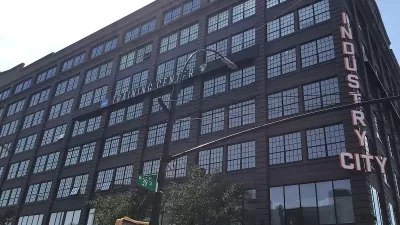New research draws on the popular review site Yelp to predict changes in housing prices and demographics.

Laura Bliss reports:
In a new working paper published by the National Bureau of Economic Research, the Harvard economists Edward Glaeser, Michael Luca, and Hyunjin Kim show how Yelp data can be used to quantify and track neighborhood change, putting a hard spine on what can otherwise be a soft science.
Bliss explains the methodology of the research, before revealing its key findings for zip codes around the United States. Yelp listings reveal connections between the arrival of Starbucks and other artisanal coffee shops and impending increases in the cost of housing. "More broadly, they found that housing prices grew in tandem with the entry of new restaurants, bars, hair salons, convenience stores, and supermarkets," according to Bliss.
In New York City, the researchers used Yelp listings to glean changes in demographics, specifically education level, age, and race. "Fascinatingly, different listing types were more correlated with different demographics than others as they increased within Big Apple neighborhoods," explains Bliss. "Grocery stores were more strongly associated with demographics than any other listing type—the greater the change in grocery stores in a neighborhood, the greater the change in college-educated white people ages 25-34…"
The article also supplements the discussion of the recent study with links to previous research and resources that can help track the rise of gentrification where it's occurring or about to occur.
FULL STORY: On Yelp, Gentrification Is in the Stars

Alabama: Trump Terminates Settlements for Black Communities Harmed By Raw Sewage
Trump deemed the landmark civil rights agreement “illegal DEI and environmental justice policy.”

Planetizen Federal Action Tracker
A weekly monitor of how Trump’s orders and actions are impacting planners and planning in America.

The 120 Year Old Tiny Home Villages That Sheltered San Francisco’s Earthquake Refugees
More than a century ago, San Francisco mobilized to house thousands of residents displaced by the 1906 earthquake. Could their strategy offer a model for the present?

In Both Crashes and Crime, Public Transportation is Far Safer than Driving
Contrary to popular assumptions, public transportation has far lower crash and crime rates than automobile travel. For safer communities, improve and encourage transit travel.

Report: Zoning Reforms Should Complement Nashville’s Ambitious Transit Plan
Without reform, restrictive zoning codes will limit the impact of the city’s planned transit expansion and could exclude some of the residents who depend on transit the most.

Judge Orders Release of Frozen IRA, IIJA Funding
The decision is a victory for environmental groups who charged that freezing funds for critical infrastructure and disaster response programs caused “real and irreparable harm” to communities.
Urban Design for Planners 1: Software Tools
This six-course series explores essential urban design concepts using open source software and equips planners with the tools they need to participate fully in the urban design process.
Planning for Universal Design
Learn the tools for implementing Universal Design in planning regulations.
Clanton & Associates, Inc.
Jessamine County Fiscal Court
Institute for Housing and Urban Development Studies (IHS)
City of Grandview
Harvard GSD Executive Education
Toledo-Lucas County Plan Commissions
Salt Lake City
NYU Wagner Graduate School of Public Service





























